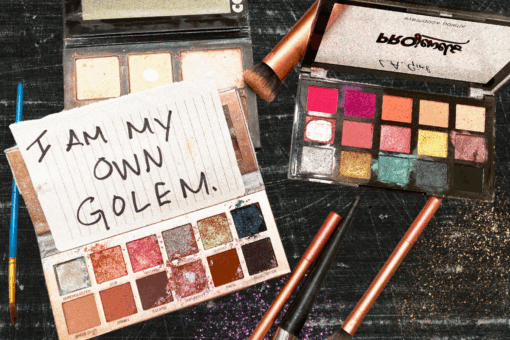I am relatively new to studying and practicing Judaism. I was raised fairly secularly, in a household where Jewish just meant matzah balls and bagels. So, when I decided that I was going to be Jewish, really Jewish, at 19, I needed a way to relate to this ancient practice.
It was also around this time that I declared my major as Women’s Studies and was just beginning to get into activism and community organizing. So I needed a way for my Judaism to reflect the values and beliefs that I was studying and protesting for.
At first glance, it seemed that much (really, all) of Judaism was written by and for men. There were no female community leaders, no female cantors, no female educators, and certainly no female rabbis until relatively recently. Yet women were expected to live their lives and raise their children in the Jewish tradition. They were expected to keep a Jewish household, even though Hebrew and Aramaic, the languages of their religious texts, weren’t taught to them.
Over the years, I’ve discovered new ways of interpreting Jewish texts and rituals that fed both my Jewish and feminist soul. But my favorite, and most recent discovery, are techines. Techines were short prayers, written by and for Jewish women, in parts of Eastern Europe starting in the 16th century. Many of these techines that have survived to the modern day were written in Poland, where my own family originates from. This discovery has led me down a rabbit hole of women’s roles in functional Judaism.
The earliest known techine had the following inscription from the author: “Now our sages have composed many praises … and prayers to the Almighty God … in the holy tongue, which women usually do not understand … It is like a blind person standing at a window and looking out at the street to see wondrous things — this is the same as women saying the tehinnot in the holy tongue and not knowing what they are saying … Thus, I could not excuse myself from acceding to [women’s] desire … so that she will be able to understand the prayers … For prayer comes from the heart, and when the heart does not know what the mouth speaks, the prayer helps but little.”
Because that spirituality and connection to the Divine took place outside of synagogues and existed within the home, Yiddish-speaking women found ways to supplement their practice outside of the liturgy, like the Torah and Tanakh.
Most of the techines written in Eastern Europe were collected in booklets of about 15 to 20 pages each. Each prayer was fairly short, consisting of about 10-20 lines. They tended to cover one specific topic, like candle lighting, challah making, and daily prayer. Additionally, these booklets were small, probably pocket sized, so women would be able to carry and reference them with ease, unlike a large and cumbersome Torah scroll or prayer book.
And unlike many traditional Hebrew prayers that centered the Patriarchs and God, these prayers almost exclusively framed the Matriarchs and other biblical women.
For example, one techine for candle lighting ends with: “May those we nurture light the world with Torah and good deeds. Hear the prayers I utter now in the name of our mothers Sarah, Rebekah, Rachel, Leah, Bilhah and Zilpah. May Your light, reflected in these candles, surround us always. And let us say, Amen.”
Now, with the rise of feminist Jewish practice and a widespread reclamation of parts of Judaism for women, techines have begun to recirculate into the mainstream. Old techines are read again and new techines have been written. These prayers have become modernized and many continue with the tradition of filling the gaps that Jewish women have felt in their spiritual lives.
Ritualwell has published several modern day techines on everything from infertility to Planned Parenthood. The one for Planned Parenthood concludes with the line, “Ribono shel olam, bless these sacred spaces of decision.” As a young woman attempting to blend her Judaism and her feminism, seeing prayers like this fill me with pride. I do not have to compromise my religious and spiritual aspects of Judaism with my values and beliefs. My feminism coexists with my Judaism. The two, perhaps, constitute one another.
It’s these kinds of prayers I would like to recite and say. And without the pressure to say them in Hebrew, I can say them and truly grasp what I am saying. While prayer isn’t a huge part of my Judaism at the moment, I am really excited to incorporate these techines into my own practice and perhaps even write my own. Not all existing prayers sit right with me from a feminist standpoint, so knowing that I can write my own and carry this tradition helps me feel like I can truly make this ancient practice my own.
Header Image: Morning perusal by Antônio Parreiras



